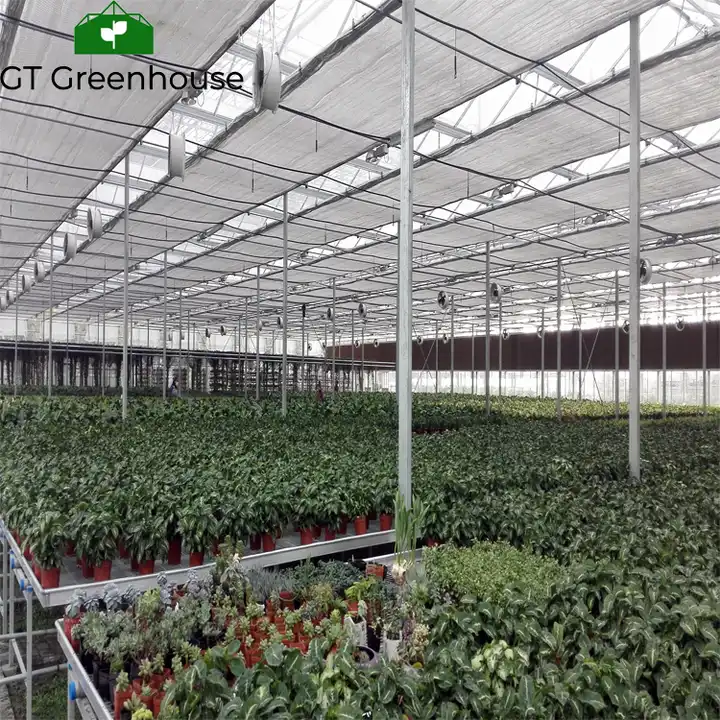Greenhouse spray systems can be designed for a variety of plants depending on their specific needs and the goals of the spraying operation.
Here are some examples of plants commonly grown in greenhouses that may benefit from spray systems:
- Vegetables: Greenhouse-grown vegetables such as tomatoes, cucumbers, peppers, lettuce, and herbs often require regular foliar sprays for pest and disease management, nutrient supplementation, and growth regulation.
- Flowers: Various flowers, including roses, orchids, gerbera daisies, chrysanthemums, and carnations, are commonly grown in greenhouses. Spray systems can be used for foliar fertilization, pest control, disease prevention, and improving flower quality.
- Fruits: Greenhouse-grown fruits like strawberries, melons, and berries may benefit from spray systems for pest management, disease control, and enhancing fruit set and quality.
- Herbs and Medicinal Plants: Culinary herbs such as basil, mint, cilantro, and parsley, as well as medicinal plants like lavender, chamomile, and echinacea, can be grown in greenhouses and may require spray applications for pest control, disease prevention, and promoting plant health.
- Nursery Plants: Greenhouse nurseries often produce young plants, seedlings, and transplants of various ornamental plants, shrubs, and trees. Spray systems can be used for disease prevention, pest management, and foliar nutrition during the early stages of plant development.
- Microgreens and Sprouts: These young and tender greens are often grown hydroponically or in controlled environments within greenhouses. Spray systems can be used for irrigation, nutrient application, and maintaining optimal moisture levels for germination and growth.
- Specialty Crops: Greenhouses also support the cultivation of specialty crops such as exotic herbs, edible flowers, baby leaf greens, and niche vegetables. Spray systems can be customized to meet the specific requirements of these crops, including pest control, disease prevention, and nutrient management.
The specific spray requirements for each plant species may vary, greenhouse misting system including the type of spray solution, application frequency, and targeted pests or diseases. It’s important to consult with horticultural experts or follow recommended guidelines for each crop to ensure the proper and safe use of spray systems in greenhouse production.
Here is more information about greenhouse spray systems:
A greenhouse spray system is a device used to spray the application of liquid solutions or suspended substances in a greenhouse environment. The system typically includes components such as a spray head, spray pump, nozzle, pipe, and controller. These systems can be used for a variety of purposes, including:
- Pest management: Spray systems can be used to control pests and diseases in greenhouses. Spray application of pesticides, insecticides or biological control agents can effectively control the spread and reproduction of pests and germs. This is important for keeping plants healthy and reducing the impact of disease.
- Nutritional supplements: Spray systems can be used to provide nutritional supplements to plants. By spraying fertilizer, trace elements or plant growth regulators, you can ensure that plants get the nutrients they need to promote growth and development.
- Moisture regulation: The spray system can be used to regulate the humidity and moisture in the greenhouse. In dry environments, sprays can increase humidity in the air, helping plants retain water and reduce transpiration. This is very beneficial for plant growth and adaptation to hot climates.
- Temperature control: The spray system can be used to regulate the temperature in the greenhouse. In hot weather, the spray can reduce the air temperature through evaporation, creating a more suitable growing environment. In addition, the spray can be used to protect plants from cold weather.
- Foliar light: Spray systems can also be used to improve foliar light on plants. By forming tiny water droplets on the leaves, the spray can increase the scattering and reflection of light, improving the uniformity of light and utilization efficiency.
- Enhance plant quality: Regular spray application can improve the quality and appearance of plants. For example, spray-applied nutrient solutions can increase the greenness of leaves and the vividness of plants. In addition, the spray can also be used to apply a protective agent to improve the gloss and freshness of the fruit.
- Seed treatment: Spray systems can be used to treat seeds to improve their germination rate and growth performance. The germination rate of seeds and the quality of seedlings can be improved by spray application of plant growth regulators, disease prevention agents or protective agents.
- Environmental control: The spray system can be integrated with the automation and monitoring system of the greenhouse to achieve precise control of environmental parameters such as temperature, humidity and light. This makes greenhouse operations more automated and intelligent, improving production efficiency and crop quality.
The design and use of greenhouse spray systems should be determined according to the needs, growth stages and goals of specific plants. The requirements for spray applications may vary from plant to plant, so it is recommended to consult a professional before using a spray system
